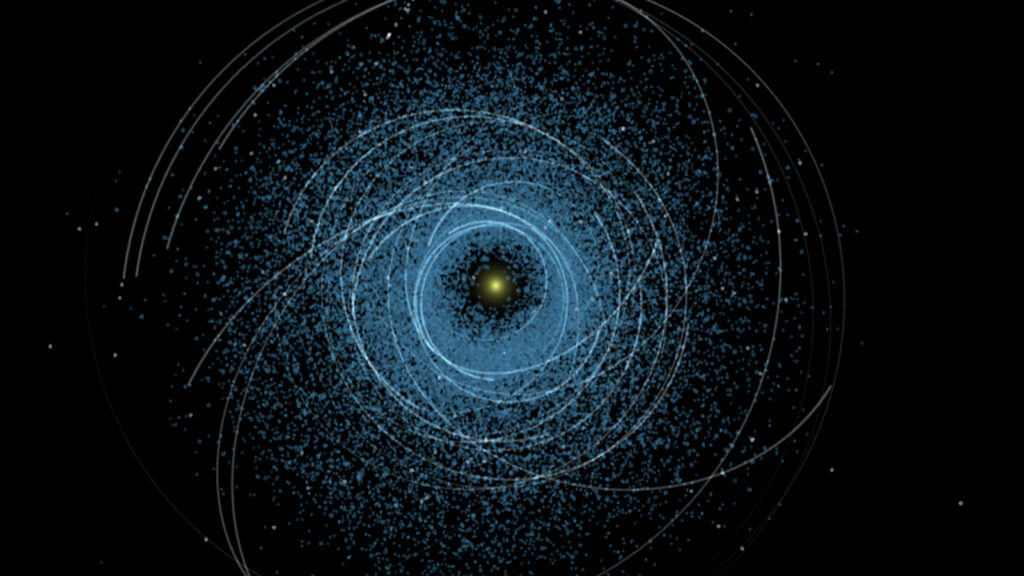
World Asteroid Day 2025 is here, offering a unique opportunity to witness real-time views of near-Earth asteroids from the comfort of your home. On June 30, the world marks the 10th anniversary of this United Nations-backed event, which aims to raise awareness about asteroids, their scientific significance, and the efforts to mitigate potential risks they pose.
The date of World Asteroid Day coincides with the anniversary of the 1908 Tunguska event, when a massive meteor exploded over Siberia, flattening millions of trees and igniting widespread forest fires. This historical event underscores the importance of understanding and preparing for asteroid impacts.
Live Streaming Asteroids: A Virtual Telescope Event
The Virtual Telescope Program has announced a special livestream to celebrate World Asteroid Day. The event will showcase real-time views of near-Earth asteroids and include discussions on their characteristics and the risks they pose. The livestream will be available on the Virtual Telescope Project’s YouTube channel, starting at 5 p.m. EDT (2100 GMT) on June 30. The event is free and accessible to all viewers.
Earth bears the marks of numerous ancient asteroid impacts, the most significant being the Chicxulub impactor, which led to the extinction of many species and altered the course of life on our planet. Fortunately, NASA’s Center for Near Earth Object Studies assures that no large asteroid capable of causing widespread destruction is expected to strike Earth in the next century.
Global Efforts in Asteroid Defense
While asteroid defense once seemed the realm of science fiction, recent decades have seen significant progress in preparing for potential asteroid collisions. The annual Planetary Defense Conference, organized by NASA, ESA, and other international partners, focuses on strategies to prevent and respond to hypothetical asteroid impacts. These exercises address challenges such as mission design speed, intelligence gathering, and public communication.
Beyond simulations, tangible efforts are underway. In September 2022, NASA’s Double Asteroid Redirection Test (DART) made history by impacting the 160-meter-wide moonlet Dimorphos, part of the binary asteroid system Didymos. This mission demonstrated that a kinetic impact could effectively alter the trajectory of a small solar system body, offering a viable defense strategy. The European Space Agency’s Hera mission will visit the Didymos system in December 2026 to observe the impact’s aftermath.
Advancements in Asteroid Detection
Efforts to detect potentially hazardous near-Earth objects are also advancing. The Vera Rubin Observatory, with its powerful telescopic capabilities, is set to enhance these efforts significantly. Located atop Mount Cerro Pachón in Chile, the observatory’s primary mission is to explore dark energy and dark matter, but it has also proven to be an exceptional asteroid hunter.
In just a few nights, astronomers using the Rubin Observatory identified 2,104 new near-Earth objects. Experts estimate that the observatory could discover up to five million more in the coming years.
“This is five times more than all the astronomers in the world discovered during the last 200 years since the discovery of the first asteroid,”
said Željko Ivezić, Deputy Director of Rubin’s Legacy Survey of Space and Time, during a press conference unveiling the observatory’s first images on June 23.
The Future of Asteroid Awareness and Research
The ongoing efforts to study and understand asteroids are crucial for planetary defense and scientific advancement. As technology and international collaboration continue to evolve, humanity’s ability to detect, track, and potentially deflect hazardous asteroids improves. World Asteroid Day serves as a reminder of the importance of these efforts and the need for continued vigilance.
Looking ahead, the global community remains committed to enhancing our understanding of asteroids and developing strategies to protect Earth from potential impacts. With initiatives like the Virtual Telescope Program’s livestream and the groundbreaking work of observatories like Vera Rubin, the future of asteroid research and awareness looks promising.







